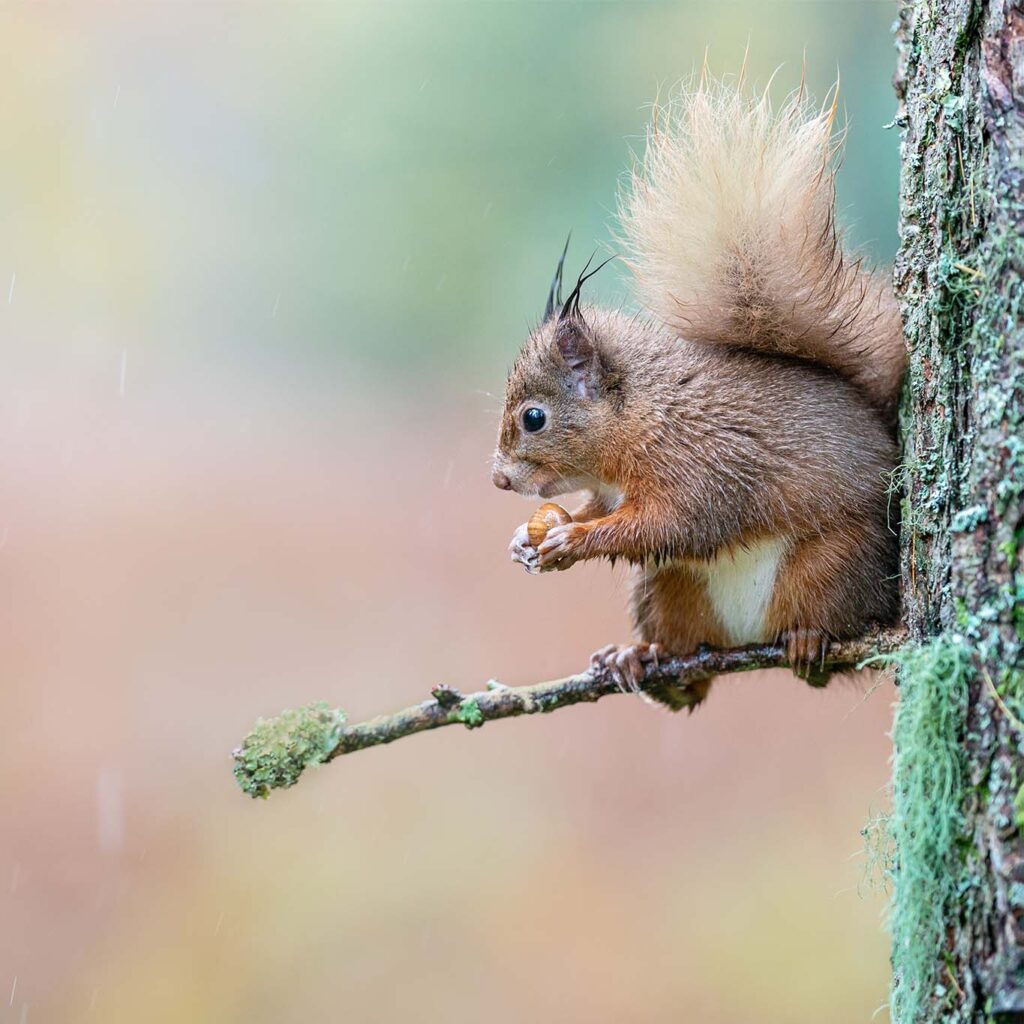Stormy weather has hit Scotland hard in recent weeks, causing severe hardship to many and devastation to some of our native and commercial woodlands. While the safety of our staff and volunteers is always our top priority, it’s not surprising that many people have been in touch with us to ask “how are the red squirrels coping?”
Some interesting facts about red squirrels: they are excellent home-builders and expert insulators. Squirrel nests (called dreys) are made from all sorts of sturdy and cosy materials. From the outside they might look like a messy ball of twigs, but they won’t fall apart that easily! Squirrel dreys are often so well insulated with moss, leaves and feathers that no heat can be seen escaping when viewed through a thermal imager. Perfect for a quiet night in!
Red squirrels plan ahead and will usually have several dreys on the go at any one time, moving between them as and when suits them. So if a squirrel felt threatened in one drey they will often have the option to move elsewhere, and if a drey was destroyed they wouldn’t become homeless overnight.
Of course, it is entirely possible that some red squirrels (and other wildlife) have been harmed as a result of Storm Arwen and Storm Barra, although measuring this would be a very difficult task. Certainly some sources of food will have been lost. However, we can take comfort knowing just how resourceful and adaptable these animals are. It is very unlikely local red squirrel population numbers as a whole will be affected, especially as this is not the red squirrel breeding season.
A bigger question is, if these extreme weather events become more and more common, will they begin to have a serious impact on red squirrel populations? Our lead project partner the Scottish Wildlife Trust is calling on the Scottish Government to urgently scale up action to tackle the nature and climate crises together. Add your voice by signing the petition here.

